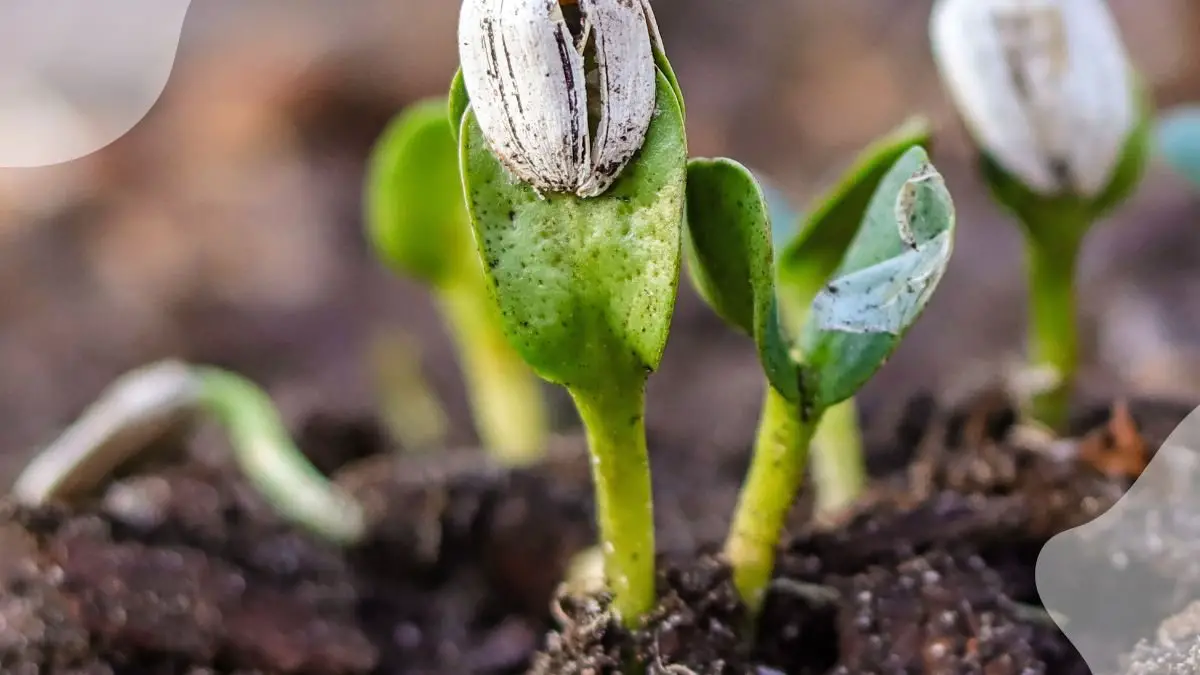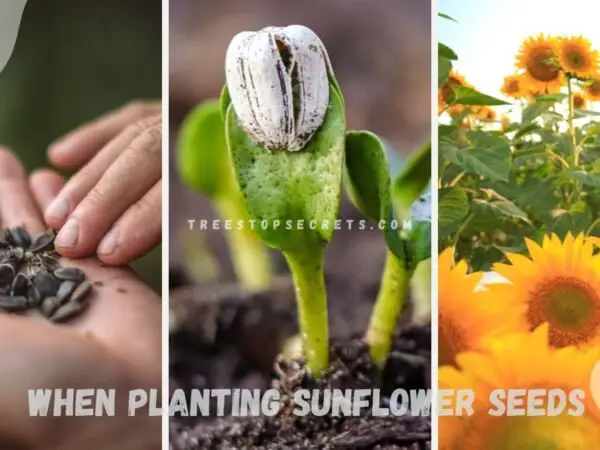Did you know that sunflowers can grow an astonishing 8 to 12 feet tall in just a few months? From planting the seed to witnessing the vibrant bloom, the journey of a sunflower is truly remarkable. Understanding the timeline of sunflower growth is essential for any aspiring gardener or nature enthusiast.
Whether you're eager to cultivate these sunny blooms in your garden or simply curious about their growth process, this guide will provide you with all the insights you need. Let's delve into the fascinating world of sunflowers and uncover the secrets behind how long they take to grow.
Key Takeaways
- Patience is key when growing sunflowers as they can take 80 to 120 days to reach maturity.
- Prepare the soil adequately by ensuring it is well-drained and in a sunny location before planting sunflower seeds.
- Plant sunflower seeds directly into the ground after the last frost date in your area, ensuring they have enough space to grow.
- Provide proper care to sunflowers by watering them regularly, especially during dry spells, and protecting them from pests like birds and squirrels.
- Monitor the growth of sunflowers by observing their height, leaf color, and overall health throughout the growing season.
- Harvest sunflowers once the back of the flower head turns yellow and the seeds are plump and developed.
Understanding Sunflower Growth
Seed Germination
Sunflower seeds germinate in 7 to 10 days, initiating the growth process. This stage is crucial as it sets the foundation for the entire sunflower lifecycle. As the seeds sprout, they develop roots, anchoring themselves into the soil.
Vegetative Stage
During the vegetative stage, sunflowers undergo rapid growth to establish their structure. This phase is vital for the development of sturdy stalks and abundant leaves. Sunflower seedlings also produce their first true leaves, essential for photosynthesis and nutrient absorption.
Budding Phase
In the budding phase, sunflowers begin to form flower buds that gradually unfurl to reveal vibrant petals. This stage typically occurs around 5 to 10 weeks after sowing the seeds. The emergence of flower buds signifies the transition towards the next phase of growth.
Flowering
As sunflower buds fully open, they enter the flowering stage, showcasing their full bloom. The flowering period usually lasts between two to four weeks, depending on environmental conditions. Certain sunflower varieties with branching characteristics can extend their blooming period.
Preparing to Plant Sunflowers
Choosing a Site
When planting sunflowers, select a sunny location as they require ample sunlight for optimal growth. Ensure the chosen site has well-draining soil to prevent waterlogging, which can hinder root development. Consider providing wind protection, especially for tall sunflower varieties that might be susceptible to bending or breaking in strong winds.
Soil Requirements
Sunflowers thrive in fertile soil that drains well to avoid water accumulation around the roots. The ideal soil pH for sunflowers ranges between 6.0 to 7.5, ensuring proper nutrient absorption and healthy growth. It is crucial to avoid planting sunflowers in waterlogged or compacted soil, as these conditions can stunt their growth and lead to root rot.
Seed Selection
When selecting sunflower seeds, it is essential to choose varieties that are well-suited to your specific climate and growing conditions. Consider the mature height and bloom size of the sunflower variety you intend to plant, as this will determine its visual impact in your garden. Opt for high-quality sunflower seeds that are disease-resistant to ensure a successful and thriving sunflower garden.
Planting Sunflowers
Best Time to Plant
Plant sunflower seeds after the last frost date in your area. Spring planting ensures sunflowers bloom in late summer, maximizing their exposure to sunlight. Consider the length of your growing season when deciding on the ideal planting time.
Planting Depth and Spacing
Plant sunflower seeds 1 to 1.5 inches deep in the soil for optimal growth. Proper spacing is crucial; space seeds 6 to 18 inches apart, depending on the sunflower variety you are planting. Adequate spacing allows each sunflower to receive ample sunlight and nutrients for healthy development.
Watering Needs
Provide consistent watering during the germination and flowering stages to support sunflower growth. Overwatering should be avoided as it can lead to root rot, which may hinder the plant's overall health. Adjust the frequency of watering based on weather conditions to ensure the plants receive just the right amount of moisture.
Sunflower Care Tips
Sunlight and Watering
Sunflowers thrive in full sun, needing 6 to 8 hours of sunlight daily for optimal growth. Adequate sunlight exposure is crucial for robust development and vibrant blossoms. Pairing sufficient sunlight with proper watering is essential to support the overall health and progress of sunflowers.
Fertilizing
During the vegetative phase, it is recommended to use a balanced fertilizer to promote healthy growth. To prevent nutrient imbalances, apply fertilizer sparingly. Conducting soil tests can help determine the specific fertilizer requirements tailored to the needs of sunflowers.
Pest Management
Regularly check sunflowers for common pests such as aphids and caterpillars to prevent infestations. Employ natural predators like ladybugs as an eco-friendly pest control method. In cases of severe pest issues, consider using neem oil or insecticidal soap to effectively manage pest populations.
Monitoring Sunflower Growth
Growth Timeline
Sunflowers progress through germination, vegetative, reproductive, blooming, and harvesting stages. Each stage has specific requirements for optimal growth. Understanding the growth timeline is crucial for successful sunflower cultivation.
- Germination marks the initial growth phase when the seed sprouts.
- During the vegetative stage, the plant focuses on leaf and stem development.
- The reproductive phase is characterized by bud formation leading to flowering.
- Blooming is when the vibrant yellow petals emerge, attracting pollinators.
- Harvesting involves collecting mature seeds for various purposes.
Signs of Health
Healthy sunflowers display vibrant green leaves and sturdy stalks, indicating robust growth. Regularly inspect your plants for any signs of pests or diseases that may hinder their development.
- Pests like aphids or diseases such as powdery mildew can affect sunflower health.
- Wilting or yellowing leaves are common indicators of underlying issues that need attention.
- Proper watering, adequate sunlight, and soil quality are essential for maintaining sunflower health.
Harvesting Sunflowers
For Flowers
Prune sunflowers regularly to ensure they focus their energy on fewer blooms, resulting in larger and more vibrant flowers. Deadheading spent flowers is essential for encouraging the plant to continue blooming throughout the season. Using supports such as stakes or trellises for tall sunflower varieties helps prevent them from bending or breaking under their weight.
For Seeds
To harvest sunflower seeds, wait until they are fully matured on the plant. You can tell it's time to harvest when the flower heads start to droop and turn a golden brown color. After harvesting, make sure to dry the seeds thoroughly before storing them to prevent mold or rot.
For Microgreens
When cultivating sunflower microgreens, aim to harvest them when they reach a height of 2 to 3 inches for the best flavor and texture. Use sharp scissors to cut the microgreens just above the soil line, ensuring a clean cut that promotes regrowth. Before consuming, rinse the harvested microgreens thoroughly to remove any dirt or debris.
Common Challenges in Growing Sunflowers
Disease Management
Prevent fungal diseases by adjusting your watering techniques. Avoid overhead watering to reduce moisture on leaves, which can lead to fungal growth. Rotating sunflower crops annually helps break the disease cycle and minimizes the risk of infections. If powdery mildew appears, consider using fungicides to treat the affected plants.
Weather Impact
Extreme weather conditions like storms can pose a threat to sunflower growth. To protect your sunflowers, provide shelter during storms to prevent physical damage. Monitoring weather forecasts allows you to take proactive measures to shield your sunflowers from adverse conditions such as heavy rain or strong winds.
Wildlife Interference
Birds are common pests that may damage sunflowers by feeding on the flower heads. Covering the flower heads with mesh bags can effectively deter birds from accessing the seeds. Installing fences or netting around your sunflower patch creates a barrier that prevents wildlife from causing harm. Utilizing scare tactics, such as hanging reflective tape near the sunflowers, can also help keep wildlife at bay.
Benefits of Growing Sunflowers
Environmental Impact
Sunflowers, with their bright yellow petals, attract pollinators such as bees and butterflies, contributing to the ecosystem's health. By planting sunflowers, you can enhance biodiversity in your garden, creating a thriving environment for various species. Consider sunflowers as a sustainable crop that offers significant environmental benefits.
Aesthetic Value
Adding a touch of nature's beauty, sunflowers bring a vibrant pop of color to any garden, instantly uplifting its appearance. You can create stunning floral arrangements by cutting sunflowers and displaying them indoors. Incorporating sunflowers into your landscaping design can significantly enhance visual appeal and create a welcoming atmosphere.
Health Benefits
Sunflower seeds are a powerhouse of nutrients, containing essential elements like vitamin E and magnesium, crucial for overall well-being. Consuming sunflower seeds regularly may help in promoting heart health due to their nutrient content. Including sunflower products in your diet can offer a range of potential health benefits, supporting your body's nutritional needs.
Final Remarks
You now have a solid understanding of how sunflowers grow, from planting to harvesting. By following the tips provided, you can ensure your sunflowers thrive and bloom beautifully in your garden. Remember to monitor their growth regularly and address any challenges that may arise promptly to enjoy a successful harvest.
Get your hands dirty and start planting your sunflowers today. With the right care and attention, you'll soon be rewarded with vibrant blooms that brighten up your outdoor space. Happy gardening!
Frequently Asked Questions
How long do sunflowers take to grow?
Sunflowers typically take 80 to 120 days to grow from seed to maturity, depending on the variety. Factors such as weather conditions and care practices can influence the growth timeline.
What are the key steps in planting sunflowers?
Key steps in planting sunflowers include selecting a sunny location, preparing the soil by loosening it, planting seeds at the appropriate depth, watering adequately, and providing ongoing care such as weeding and fertilizing.
How should I care for sunflowers during their growth?
To care for sunflowers, ensure they receive sufficient sunlight, water them deeply but infrequently, provide support for tall varieties if needed, monitor for pests and diseases, and consider fertilizing during the growing season to promote healthy growth.
When is the best time to harvest sunflowers?
The best time to harvest sunflowers is when the back of the flower heads turns yellow or brown, and the seeds are plump. Cut the flower heads with a few inches of stem remaining, hang them upside down in a dry, well-ventilated area to finish drying, then extract the seeds.
What are some common challenges in growing sunflowers?
Common challenges in growing sunflowers include issues like pests (such as birds and insects), diseases (like mildew or rust), poor soil quality, inadequate sunlight, overwatering or underwatering, and competition from weeds. Proper care practices can help mitigate these challenges.
Image Source: Paid image from CANVA



